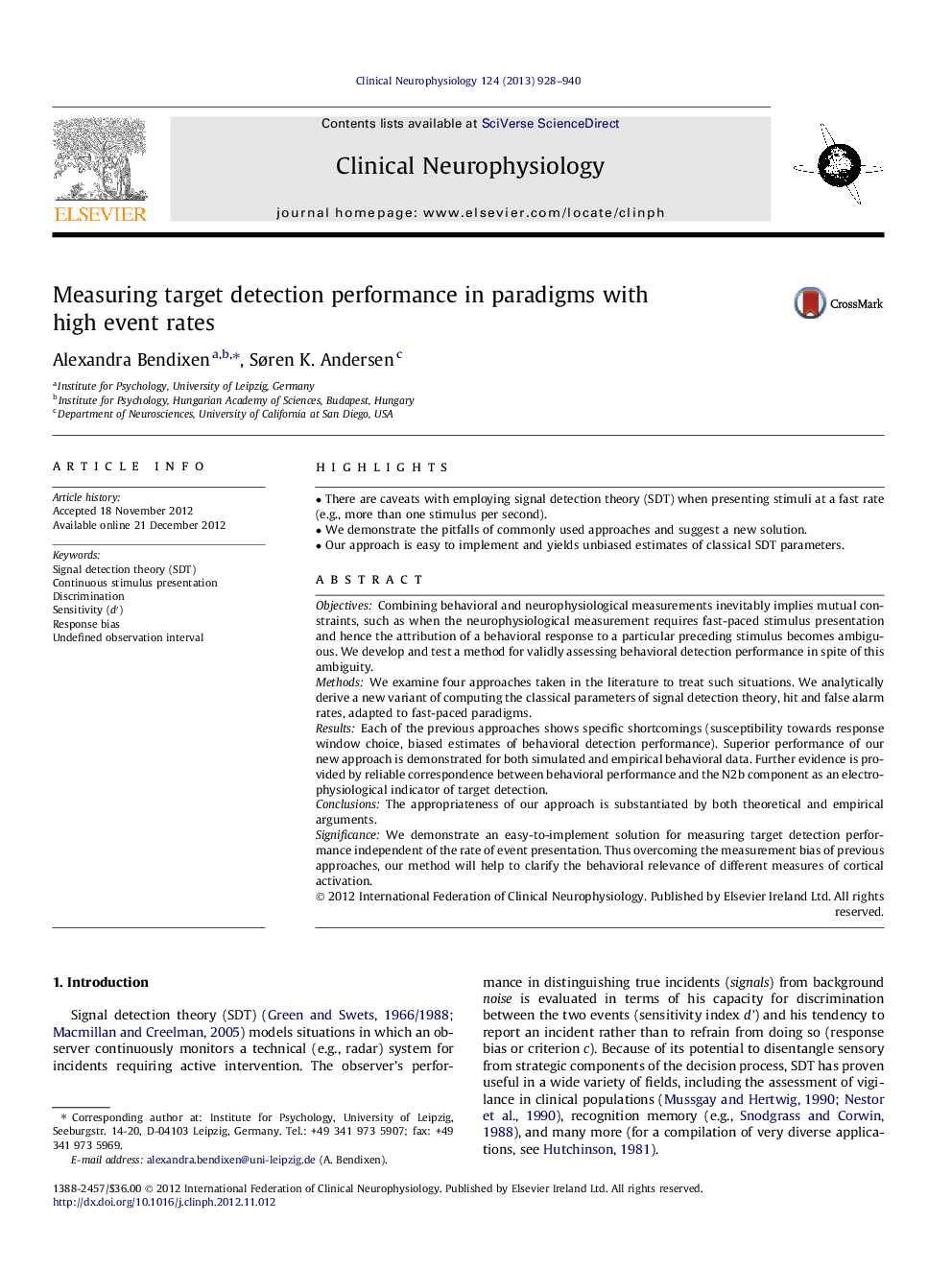| Article ID | Journal | Published Year | Pages | File Type |
|---|---|---|---|---|
| 3044332 | Clinical Neurophysiology | 2013 | 13 Pages |
ObjectivesCombining behavioral and neurophysiological measurements inevitably implies mutual constraints, such as when the neurophysiological measurement requires fast-paced stimulus presentation and hence the attribution of a behavioral response to a particular preceding stimulus becomes ambiguous. We develop and test a method for validly assessing behavioral detection performance in spite of this ambiguity.MethodsWe examine four approaches taken in the literature to treat such situations. We analytically derive a new variant of computing the classical parameters of signal detection theory, hit and false alarm rates, adapted to fast-paced paradigms.ResultsEach of the previous approaches shows specific shortcomings (susceptibility towards response window choice, biased estimates of behavioral detection performance). Superior performance of our new approach is demonstrated for both simulated and empirical behavioral data. Further evidence is provided by reliable correspondence between behavioral performance and the N2b component as an electrophysiological indicator of target detection.ConclusionsThe appropriateness of our approach is substantiated by both theoretical and empirical arguments.SignificanceWe demonstrate an easy-to-implement solution for measuring target detection performance independent of the rate of event presentation. Thus overcoming the measurement bias of previous approaches, our method will help to clarify the behavioral relevance of different measures of cortical activation.
► There are caveats with employing signal detection theory (SDT) when presenting stimuli at a fast rate (e.g., more than one stimulus per second). ► We demonstrate the pitfalls of commonly used approaches and suggest a new solution. ► Our approach is easy to implement and yields unbiased estimates of classical SDT parameters.
